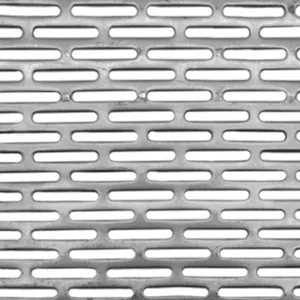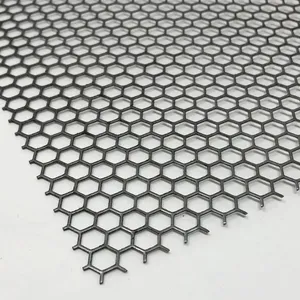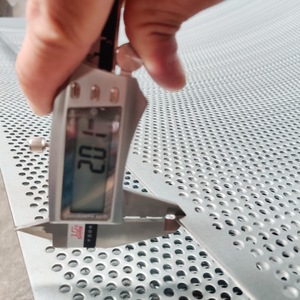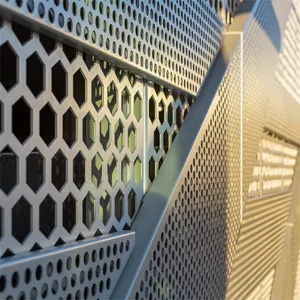
All categories
Featured selections
Trade Assurance
Buyer Central
Help Center
Get the app
Become a supplier

(2169 products available)




















A micro perforated machine is used to produce tiny holes in different types of materials. These holes are made in a specific pattern to give materials the strength and consistence needed for various applications. There are three main types of micro perforated machines: laser, rotary die, and pin hole. Each type has unique characteristics, benefits, and features.
Laser micro perforated machine:
A laser micro perforated machine uses a focused beam of light to create tiny holes in a material. It is a highly versatile and precise method of micro-perforation. The laser beam is controlled by a computer. It then creates a pattern of holes in a wide range of materials, including plastic film, paper, and foils. This method has a high level of accuracy and control, and in many cases, creates holes without causing any material damage. It is also able to create both large and small batches. Most of the machine's designs allow for quick and easy setup and also for fast changes between different perforation patterns.
Rotary die micro perforated machine:
With a rotary die micro perforated machine, tiny holes are created by a rotating cylinder. This cylinder has a lot of unique cutting dies. The cutting dies then cut through a material, creating a pattern of micro holes. The rotary die method of perforation works best on thicker and more resilient materials, such as plastics and laminates. It also provides consistent perforation patterns. There is also a quick production speed, meaning that this method is ideal for large-scale production projects.
Pin hole micro perforated machine:
A pin hole micro perforated machine works by using pins to puncture a material. The pins create a pattern of small holes. This method is really great for more porous materials, like paper and non-woven fabrics. It provides good airflow and breathability through the material. The pin hole machine is able to handle a number of different material thicknesses and also offers good precision. However, the machine may not have that reproducible as other perforating methods.
The specs of a micro perforating machine differ depending on the model and the brand. However, the following are typical specifications when looking to purchase a machine.
It is important to keep the micro perforated machines in the best condition so that they can offer many years of service. For this reason, manufacturers suggest the following maintenance tips.
The packaging industry is one of the most popular applications of a micro perforating machine. More producers are looking for ways to give their goods, such as food and pharmaceuticals, a longer shelf life. Creating tiny holes in packaging materials is one of the quickest and most economical methods to achieve this. Micro-perforations allow just enough air to circulate through the packaging to stop condensation from building up while still keeping products fresh. Packaging for perishable items like fruits, vegetables, fresh meat, and baked goods frequently uses this.
In the textiles sector, a micro perforating machine has several uses. For instance, perforated fabric is used to create lightweight tents and portable shelters suitable for use during humanitarian crises and outdoor camping. Additionally, the airflow provided by the micro holes makes perforated textiles appropriate for sports and outdoor gear, such as jerseys, hydration bags, and moisture mattresses.
Another area where micro-perforating machines have beneficial applications is electronics. For instance, the tiny holes offer a regulated entrance for airflow while minimizing the devices' total size and weight, making them perfect for gadgets like cell phones, tablets, and audio speaker grilles. What's more, thanks to better acoustics provided by the perforated patterns, sound can quickly get through the speaker systems. Subsequently, superb sound quality is produced.
Construction components like air ducts and acoustic panels frequently use micro perforating machines. The microscopic holes in these materials enhance sound insulation, promote airflow, and lessen noise pollution.
Amazingly, even in the world of art, micro-perforating machines are useful. Artists and graphic designers utilize perforated materials to produce striking visual effects. The use of micro holes allows for the creation of three-dimensional structures and light-filtering installations.
Before buying a micro perforated film machine, it's essential to determine the scope of use and demand. Identify the kind of material on which one will make micro perforations, such as paper, plastic, or foam. Consider the required production volume and frequency. Will the machine process thousands of sheets daily or only a few hundred weekly? The answer will determine whether a large industrial or small desktop machine is suitable. Ensure the chosen machine can create the number of perforations required within the specified time frame.
Examine the machine's compatibility with the material that needs to undergo micro perforation. Different machines may work better with certain types of films, so ensure a proper fit to optimize performance. Assess the machine's size and weight to ensure it can be comfortably used in the available workspace. Check the machine's production speed, cutting precision, and the size and number of perforations it can create. Some units offer adjustable settings to give operators greater control over the final product. Look into the machine's operating system to find out how it works. It may be a manual, semi-automatic, or fully automatic model, and the choice will impact labor requirements and efficiency.
Consider if the machine has any safety features, such as automatic shut-off when opened, to prevent accidents. Investigate any additional functions the machine may offer, such as the ability to make varied hole sizes and patterns. These may be helpful later on as demands change. Check the material used to make the machine's blades, rolls, and body, as strong and durable components will ensure longer life and better output. Inquire about the machine's maintenance requirements and find out if any parts are prone to quick wear and tear. A helpful servicing network can make a world of difference in keeping the machine in good working order.
Consider the warranty offered on the micro perforated film machine. A longer warranty period provides greater protection against manufacturer defects. While it is essential to stay within budget, quality should not be compromised in a machine that will play a crucial role in production. A reliable supplier can provide essential details, customer reviews, and impeccable after-sales support.
Q1: What materials can the micro perforated machine handle?
A1: The machine can create micro-perforations in a wide range of materials, including paper, plastic, packaging films, non-woven fabrics, and composite materials.
Q2: Can the machine be used for large-scale production?
A2: Yes, micro-perforated machines are available for high-volume, continuous perforation, as well as for smaller, batch processing capabilities.
Q3: What is the accuracy of a micro perforated machine?
A3: Micro perforated machines can create holes as small as 0.1mm in diameter, with varying hole sizes and patterns according to specific requirements.
Q4: Can the machine create different patterns of micro perforations?
A4: Yes, the machine can create custom patterns of micro-perforations, including hole sizes and spacing, according to specific requirements.
Q5: Can operators control the size and spacing of the micro perforations?
A5: Yes, in most cases, the size and spacing of the micro perforations can be controlled. This allows for perforation that meets specific application requirements.